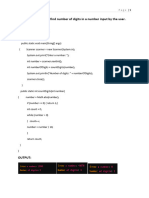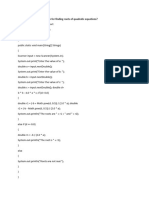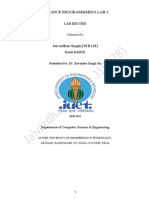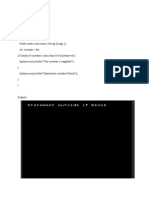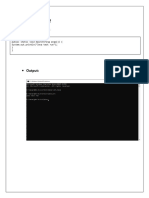0% found this document useful (0 votes)
34 views17 pagesJava - Merged
This document is a practical file for a BCA 6th semester course on Programming using Java. It includes various programming exercises covering concepts such as constructor overloading, inheritance, interfaces, polymorphism, exception handling, and basic algorithms like factorial, Fibonacci series, and prime number checking. Each exercise is accompanied by code examples, explanations, and expected outputs.
Uploaded by
scxmv5qksyCopyright
© © All Rights Reserved
We take content rights seriously. If you suspect this is your content, claim it here.
Available Formats
Download as PDF, TXT or read online on Scribd
0% found this document useful (0 votes)
34 views17 pagesJava - Merged
This document is a practical file for a BCA 6th semester course on Programming using Java. It includes various programming exercises covering concepts such as constructor overloading, inheritance, interfaces, polymorphism, exception handling, and basic algorithms like factorial, Fibonacci series, and prime number checking. Each exercise is accompanied by code examples, explanations, and expected outputs.
Uploaded by
scxmv5qksyCopyright
© © All Rights Reserved
We take content rights seriously. If you suspect this is your content, claim it here.
Available Formats
Download as PDF, TXT or read online on Scribd
/ 17


